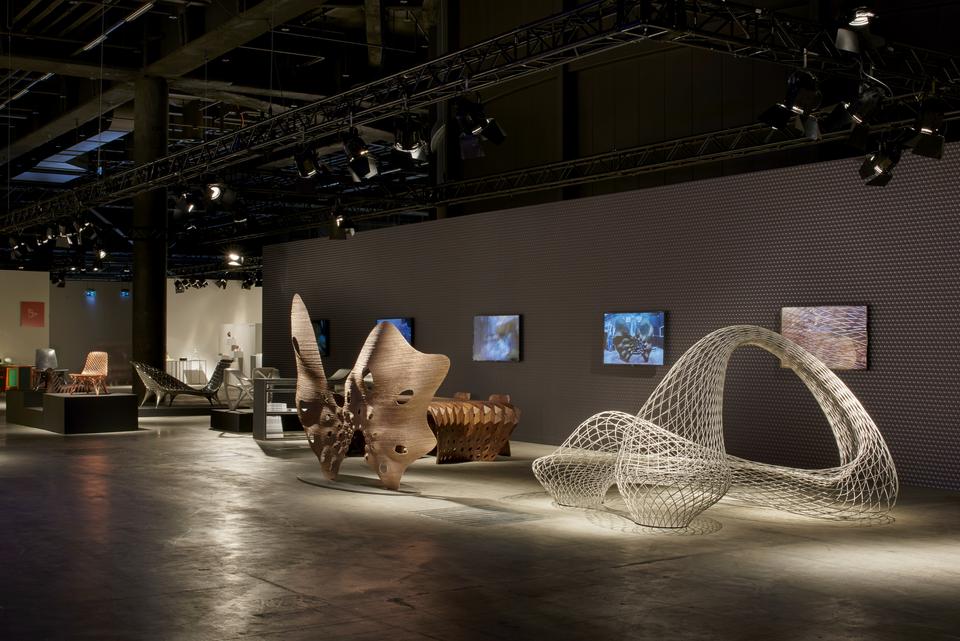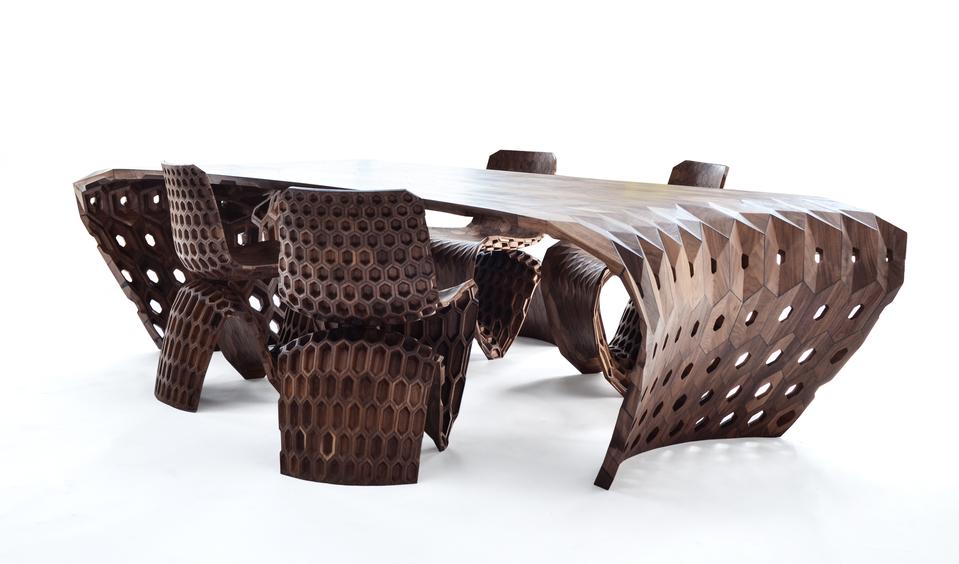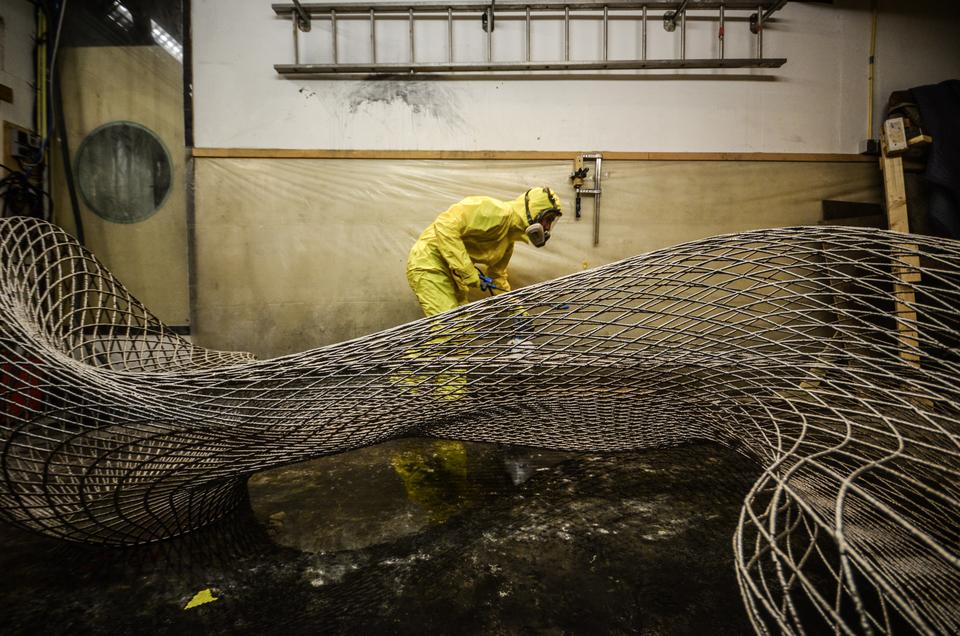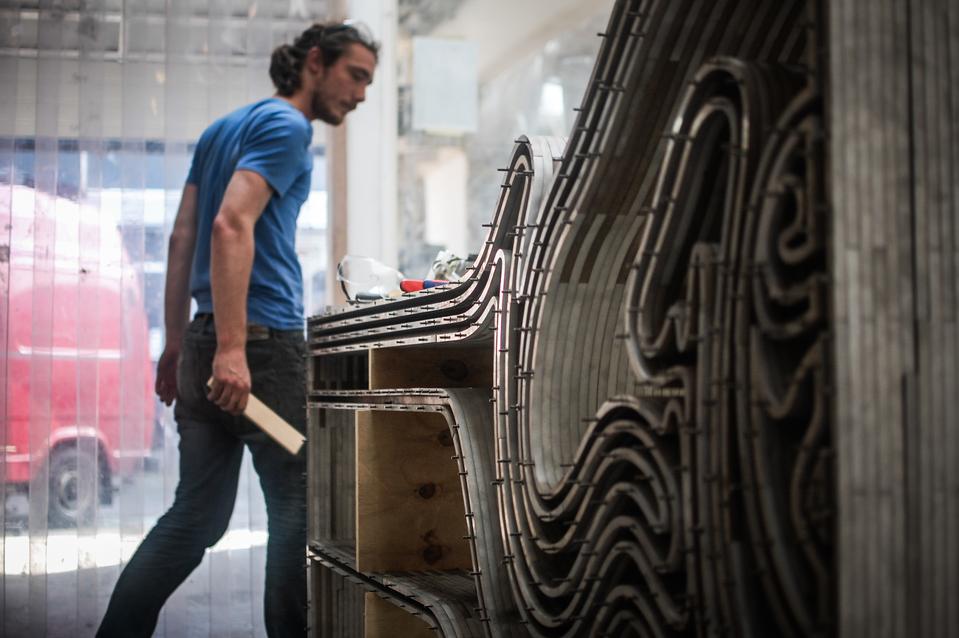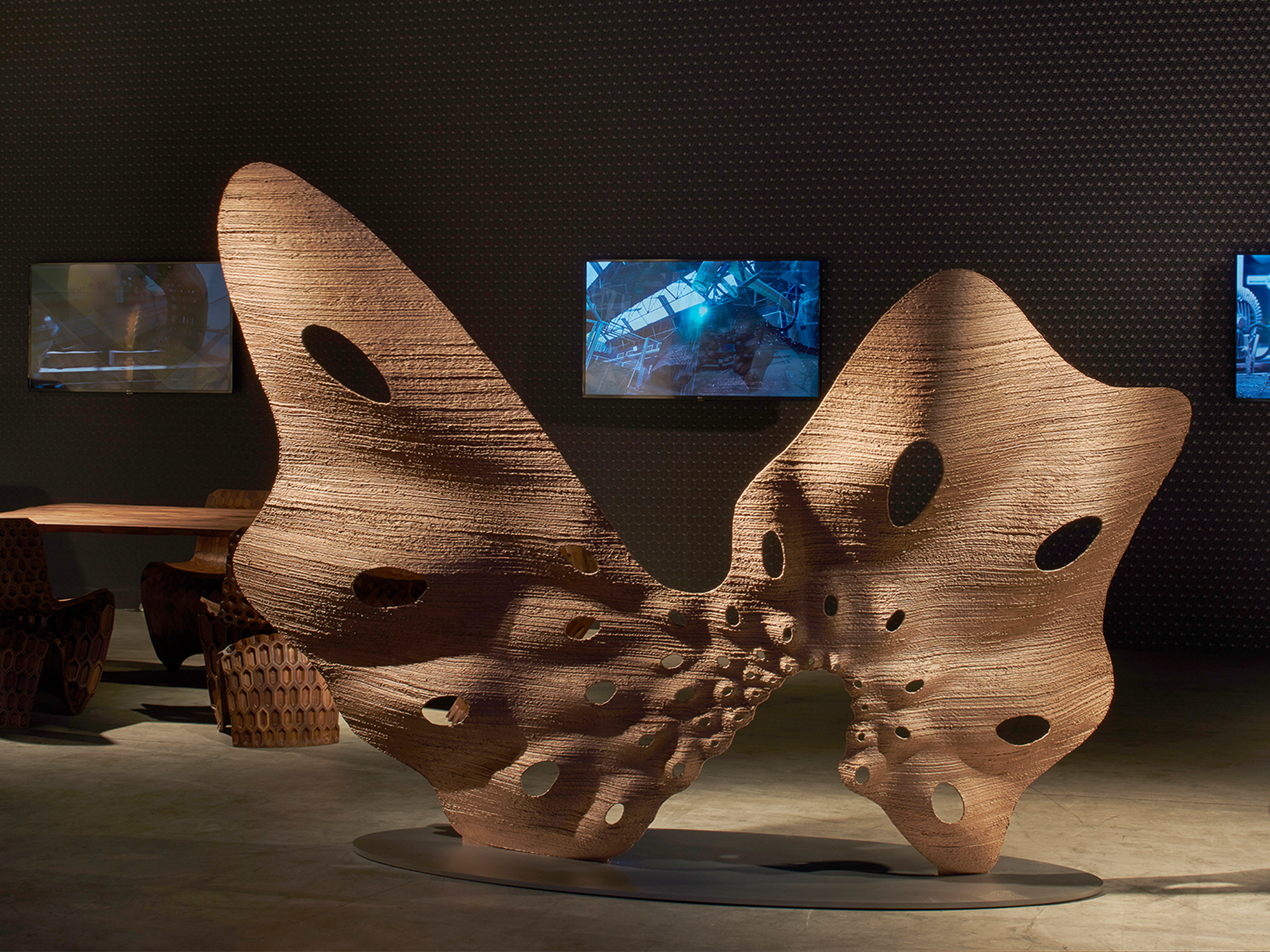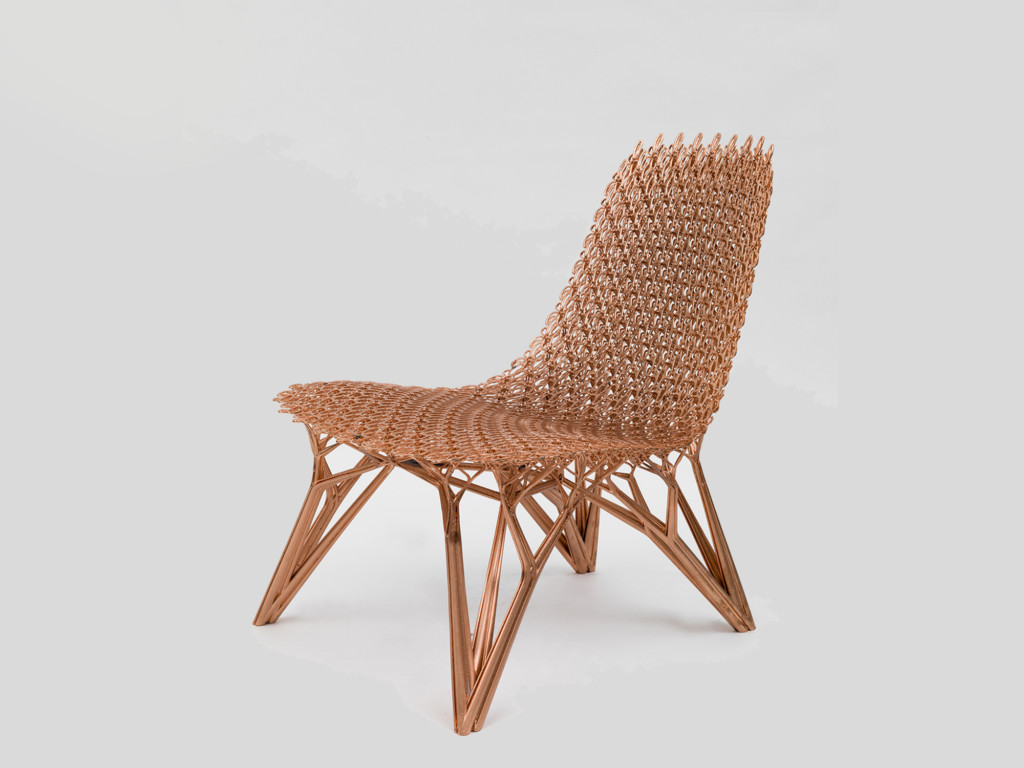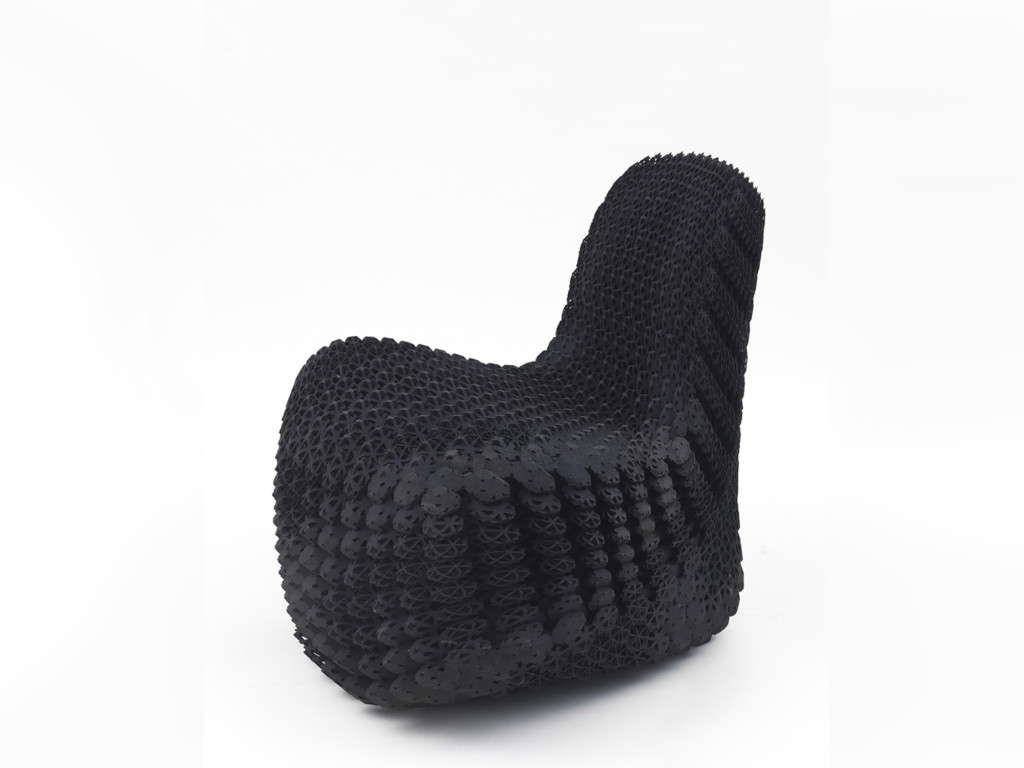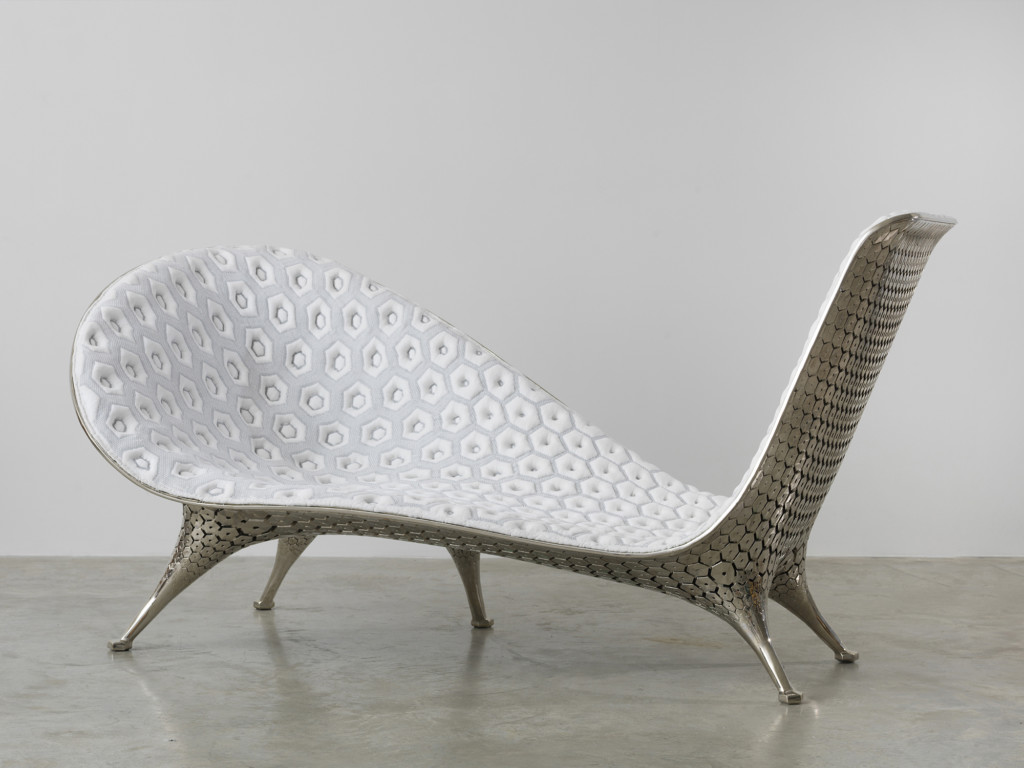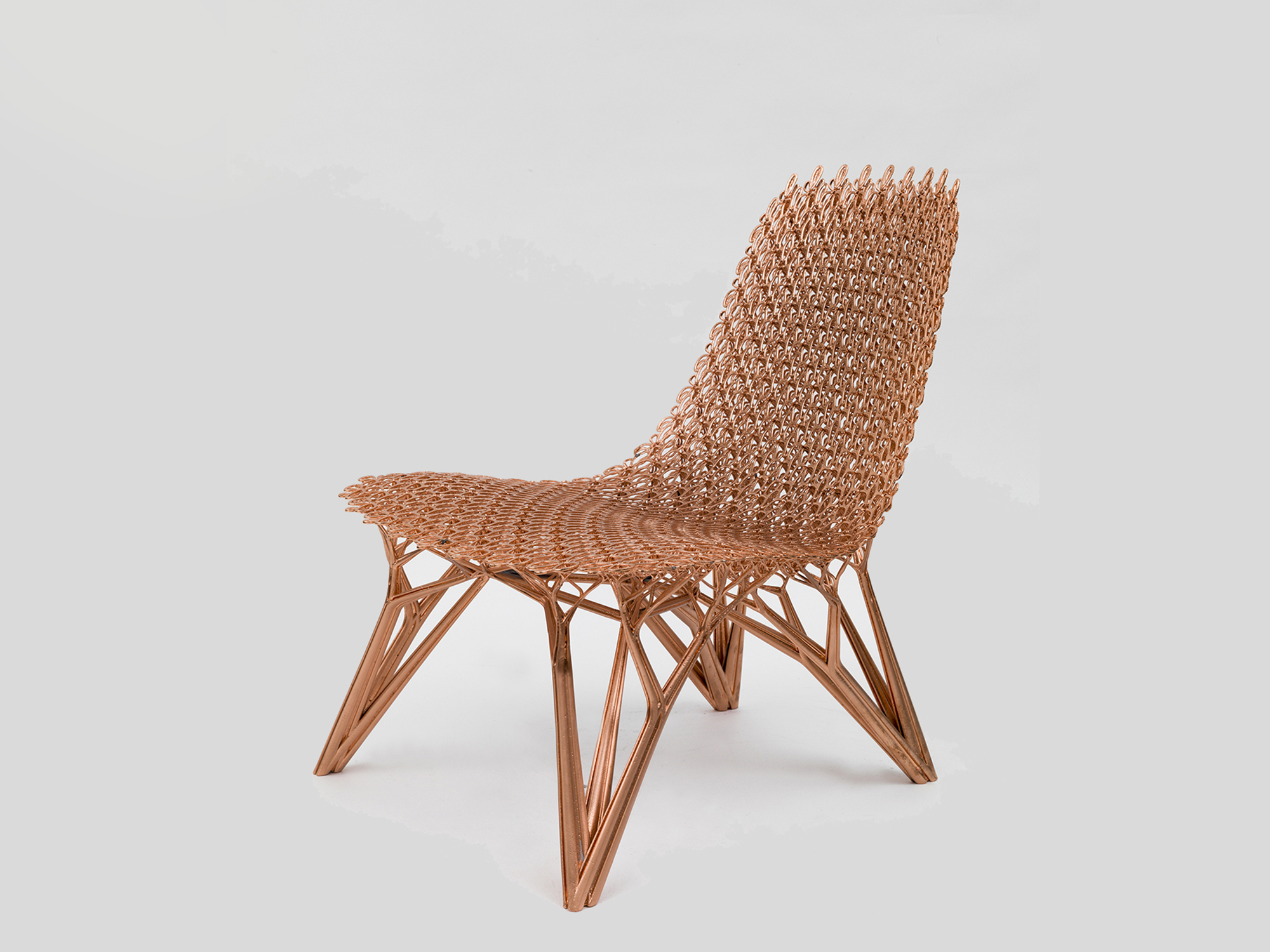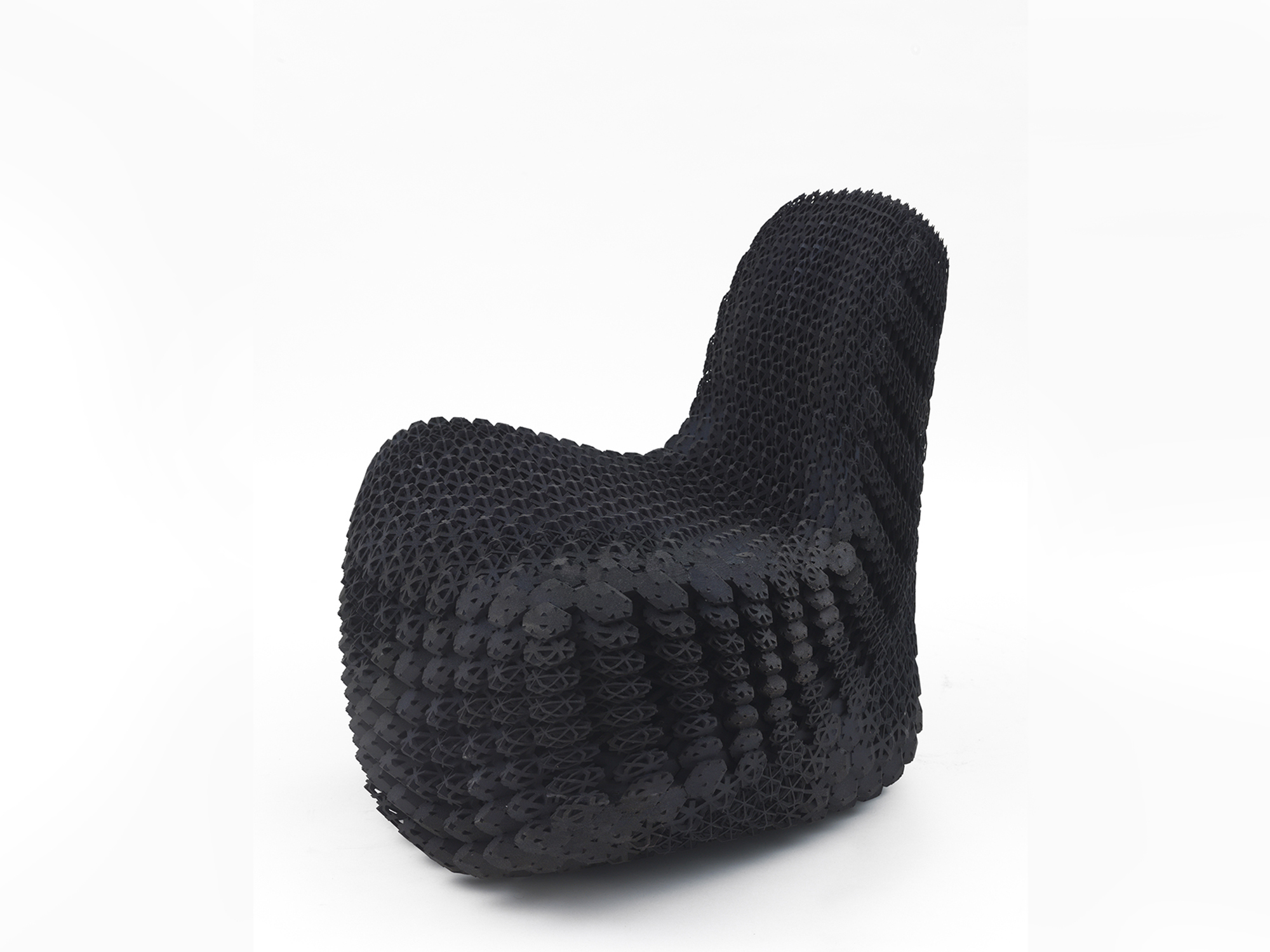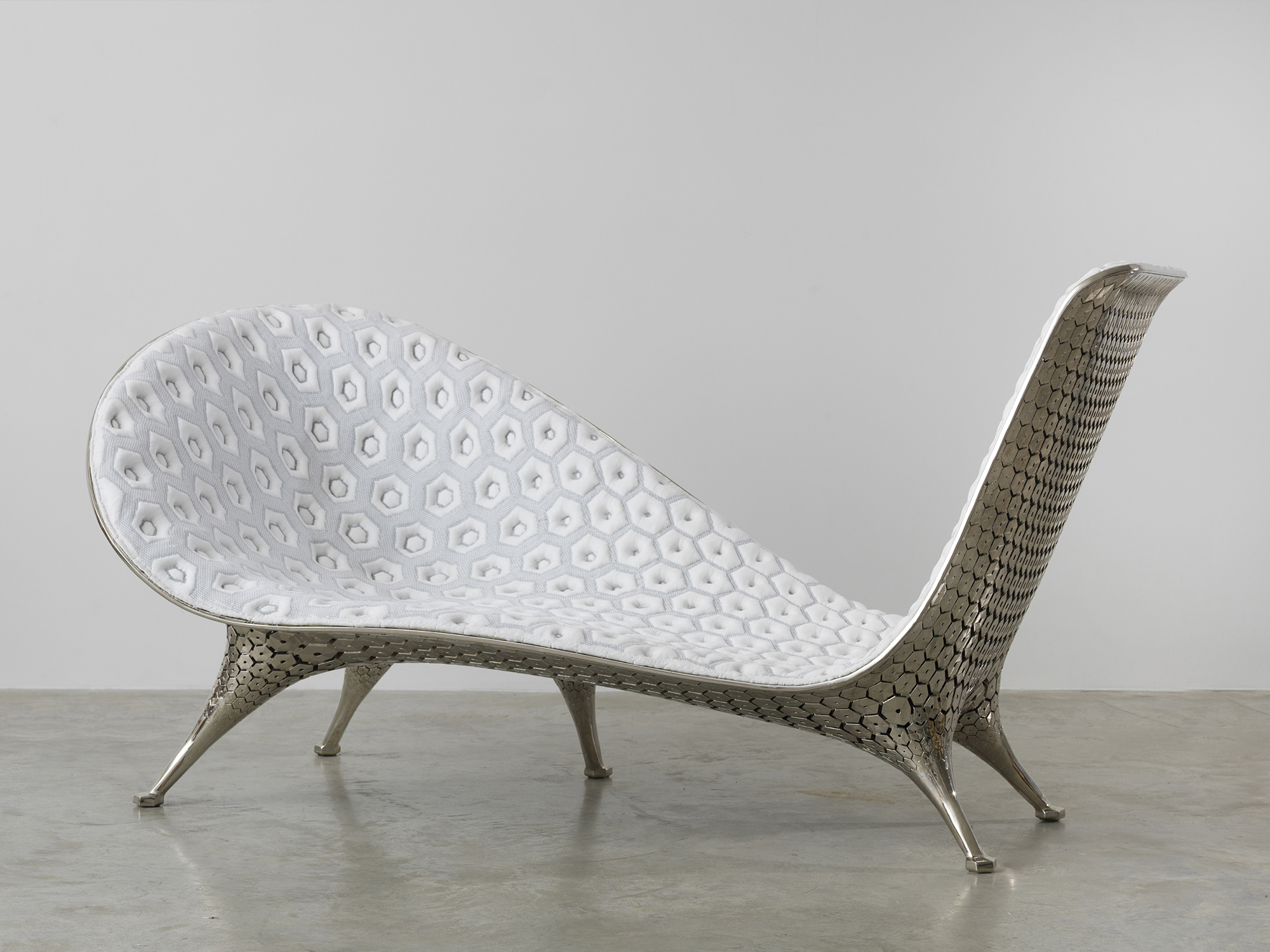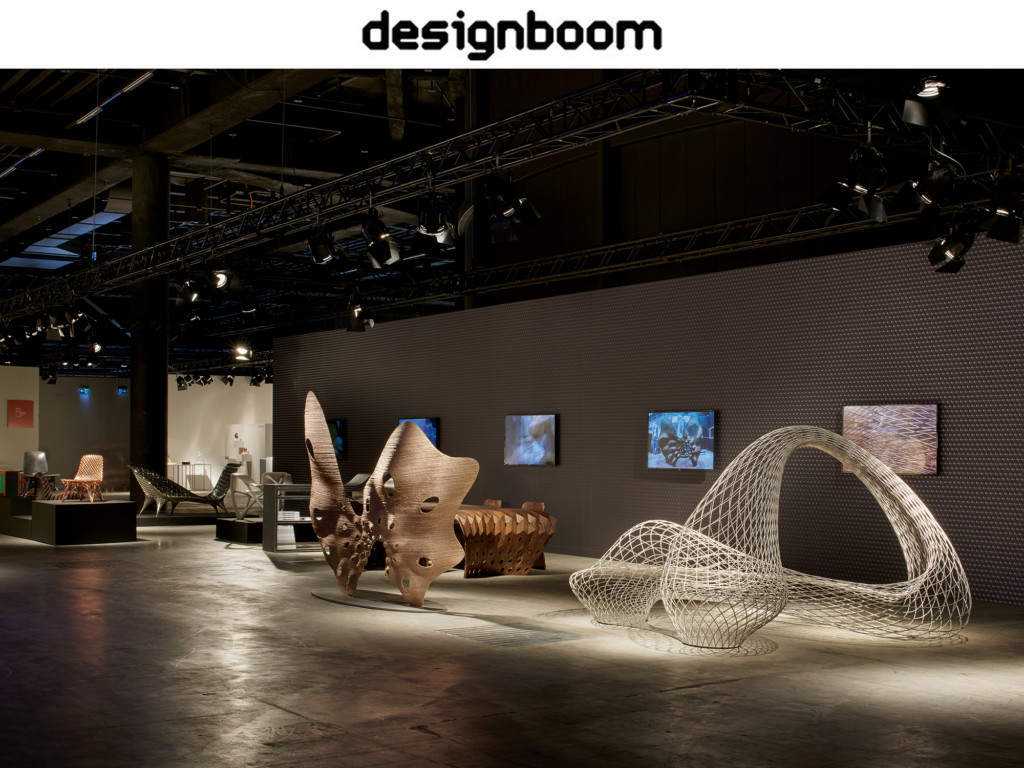Friedman Benda presents a survey of Joris Laarman’s research in digital fabrication at Design Miami/ Basel 2016, held from June 14 to June 19. Laarman typically works in series, spending up to six years at a time creating an entire body of work. Design Miami/ Basel includes works from Microstructures, Dragon Bench, and the Maker series, as well as debuting a new series of screens. Joris Laarman Lab, established in 2004, has now grown to tackle almost every aspect of production, and for these thematic explorations, the lab blends cutting-edge technology with traditional means of making. This is Laarman’s first gallery presentation in Europe, yet he has been the subject of museum exhibitions in Europe and the US.
Microstructures is conceptually based on 3D gradient patterning and explores intricate 3D printing in durable materials at the scale of furniture. Each work is made up of cells that vary in form, size or function. Dragon Bench reveals a breakthrough, wherein Laarman equips a robot arm with a welding machine that prints stainless steel mid-air, allowing him to draw complex curved lines and surfaces in space. Works in the Maker series are built from many parametric parts that are engineered to fit together exactly like a three-dimensional puzzle. Multiple materials (resin, solid woods, plastics, metals) and differentiated shapes (triangular, hexagonal, figurative, pixilated) respond to strength, weight and aesthetic necessities, while the multiplicity of small elements enable greater freedom and complexity of shape.
Parallel to these small-scale designs, Laarman has been commissioned to build a 3D printed footbridge over a canal in Amsterdam to open for public use in 2017. This follows the opening of Laarman’s mid-career survey exhibition at the Groninger Museum in his native Netherlands. The retrospective will travel next to the Musée des Arts Décoratifs in Paris from March 15 to July 3, 2017 and then to multiple locations in the US.
